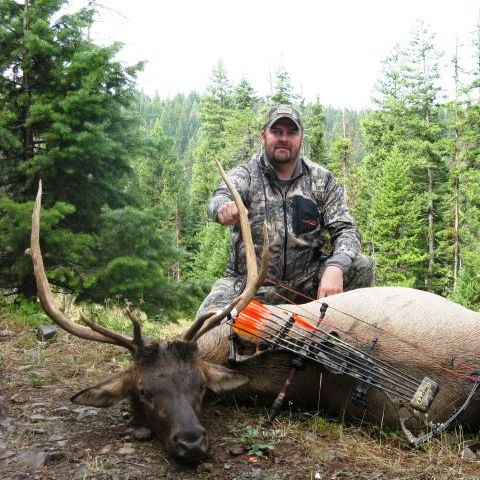Meat Care in the Field
 The shot was good, the blood trail was wide, and your bull is on the ground! Now what? The simple answer is: Get the animal/meat taken care of as quickly as possible! Below is how I care for my Elk meat in the field so that I assure it is ready for the dinner plate.
The shot was good, the blood trail was wide, and your bull is on the ground! Now what? The simple answer is: Get the animal/meat taken care of as quickly as possible! Below is how I care for my Elk meat in the field so that I assure it is ready for the dinner plate.
1) Once “Grip and Grins” are done I will begin breaking down the animal. My first order of business is putting on non-latex, non-sterile medical grade exam gloves. I typically go through 4-5 pair of gloves during the entire process. Exam gloves allow me to eliminate the potential of cross contaminating my game meat with potential “nasties” such as urine soaked underbelly hair.
2) Using “The Gutless Method”, I begin removing the quarters, back straps, tenderloins, neck meat, and scrap meat. Once I remove a large portion of meat, such as a hind quarter, I will immediately place it in a game bag to keep it free from contaminants such as dirt, hair and insects. Each major quarter (bone in) is placed in its own bag. The back straps are both placed in a single bag, scrap meat has its own bag, and the tenderloins and heart get placed in a gallon zip lock before being placed in the scrap meat bag. I prefer to use light weight game bags such as Alaskan Game Bags or Caribou Gear Big Game Bags when I am in the field. The light weight bags allow the meat to cool and dry rapidly. This cooling and drying allows the silver skin to form and the “Dry Aging” process to begin.
 3) When the meat is placed in bags I like to hang it (when possible) 40-50 feet away from the carcass in a cool dark place. Hanging improves cooling and drying by allowing air flow over the entire surface of the meat.
3) When the meat is placed in bags I like to hang it (when possible) 40-50 feet away from the carcass in a cool dark place. Hanging improves cooling and drying by allowing air flow over the entire surface of the meat.
4) Once all of the meat is back to camp I like to remove the light weight game bags and hang the quarters and back straps (with no bags on) for 3-4 hours. Of course this is weather and insects permitting. I also have to make the decision depending on the weather/temperature to either hang the meat in camp in the shade, drive into the nearest town to hang the meat in a walk in cooler, or bone the meat out and place it in the cooler.
When I bone out the animal, I leave the meat in the largest portions as possible so I can properly “Dry age” it when I get home or to my next destination. I also will cover the cooler with an old sleeping bag to maintain a temperature below 40 degrees.
For more information on the benefits of Dry Aging, awesome Elk recipes, and unbelievable dry rub’s, visit Chef John McGannon’s website at www.wildeats.com or check out his articles in RMEF’s Bugle Magazine (Carnivores Kitchen).
